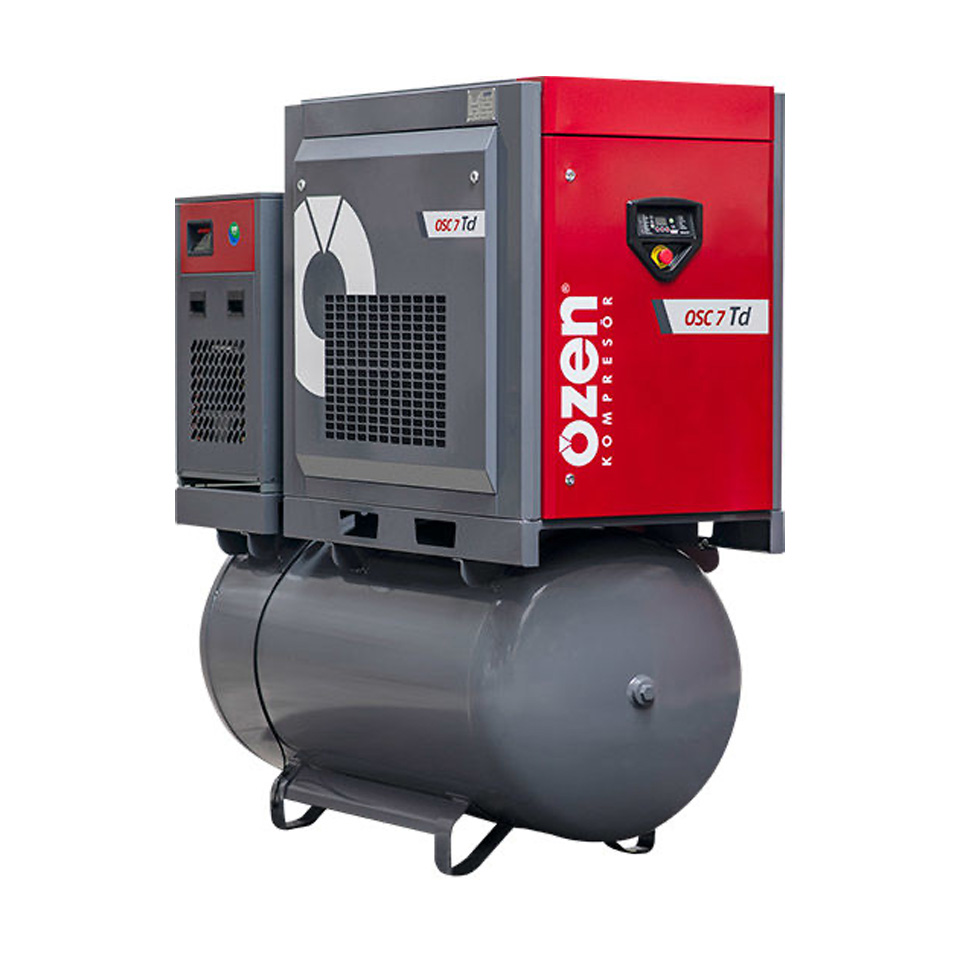Condensate Discharge Units in Compressed Air Systems
14 September 2023, Thursday

Compressed air systems are an important power source widely used in industrial enterprises. In these systems, the compressed air generated by the air compressors is used for various needs of the operation. However, the humidity inside the compressed air system can cause problems in the form of evaporation or condensation. Therefore, condensate discharge units are used in compressed air systems.
What are Condensate Discharge Units in Compressed Air Systems?
Condensate discharge units are activated in cases where the moisture in the compressed air system condenses and turns into water and can corrode the system. These devices are installed at the points of the air system that need to be cleaned regularly (filters, dryers, etc.).
Condensate discharge units are designed to drain water from a compressed air system. These devices collect water inside the compressed air system and drain it outside the system. Thus, water damage to the compressed air system can be prevented and the system can operate more efficiently.
Condensate discharge units can be operated manually and automatically. The manual discharge units are manually opened by the operator and allow the water to be drained. The automatic discharge units, on the other hand, automatically turn on and drain the water when it reaches a certain level. Hence, it is not necessary to constantly check the system and assign personnel to drain the water.
Condensate discharge units in compressed air systems are important for the long service life of the system and for more efficient operation. These devices prevent water from accumulating in the compressed air system and damaging it. In addition, automatic discharge units save time and labor by allowing water to be drained without the need for operator intervention.
What is a Compressor Discharge Valve?
The compressor discharge valve is a valve that allows the discharge of excess water and moisture within the compressed air system. Because compressors compress the air, the temperature inside them increases, and this temperature causes the moisture inside the compressed air system to condense. Condensing water can accumulate inside the system, reducing the performance of the device and even causing damage.
The compressor discharge valve increases the performance and efficiency in the system by allowing the accumulated water in the compressed air system to be discharged. These valves open automatically when the accumulated water in the compressed air system reaches a certain level, allowing the water to be drained. This increases the performance and efficiency of the compressed air system and extends the service life of the device.
Compressor discharge valves are usually placed at the lower points of the compressed air system. Valves are usually small in size and lightweight in structure, not requiring maintenance. However, in some cases, the valves may need to be checked and cleaned.
Compressor discharge valves help the system to operate more efficiently and safely by allowing the water in compressed air systems to be drained. Regular checking and maintenance of these valves ensures that the water in the compressed air system is kept under control and the life of the device is extended.
How is Discharge Performed in Compressor Systems?
In compressor systems, it is necessary to perform regular discharge operations to prevent problems such as moisture accumulation and pressure drop in the system. The discharge process is used to drain the condensate and sediment in the compressor's air tank.
The discharge process can be performed in two ways: Manual Discharge and Automatic Discharge.
Manual Discharge:
The manual discharge process in compressor systems is a process for draining condensate and sediment from the air tank. The processing steps are as follows:
The compressor system must be decommissioned and all power supplies must be turned off.
The safety valve must be opened. The safety valve allows the air to be safely discharged if the pressure in the air tank is excessively high.
The discharge valve must be opened to drain the condensate. The discharge valve is usually located on the underside of the air tank. You can use a switch or a pull rod to open the valve.
After the condensate is completely drained, the discharge valve must be closed.
The safety valve must be closed.
The compressor system must be made ready for use again. In this step, all power supplies should be reconnected and the system should be put into normal operation mode.
Note: Manual discharge should be carried out at regular intervals depending on the temperature and humidity conditions. This extends the life of the system and allows you to achieve optimal performance. It is also important to regularly check and maintain all components, such as the safety valve and the discharge valve.
Automatic Discharge:

Automatic discharge in compressor systems is a mechanism used to evacuate the accumulated water vapor or condensate of the system. Compressors can compress water vapor at the same time as compressing air during the compression process. This water vapor condenses and becomes condensate when it cools at the outlet of the compressor. This condensate can accumulate inside the system, causing damage to the installation and equipment.
The automatic discharge system is used to prevent the accumulation of condensate and reduce the level of humidity in the system. The system automatically drains condensate collected at a predetermined point through a valve or trap. This process increases the efficiency of the compressor and extends the service life of the installation. The automatic discharge system may be available as an internal part of some compressors or may be used by adding it as a separate unit outside the system. The frequency of evacuation may vary depending on the type of system, operating conditions, and the humidity level of the environment.
